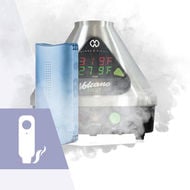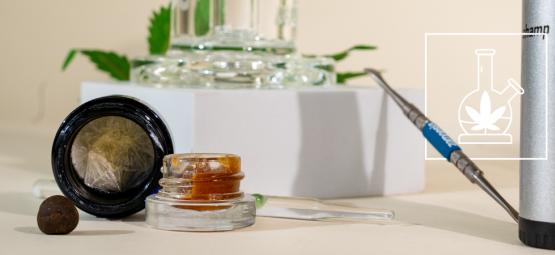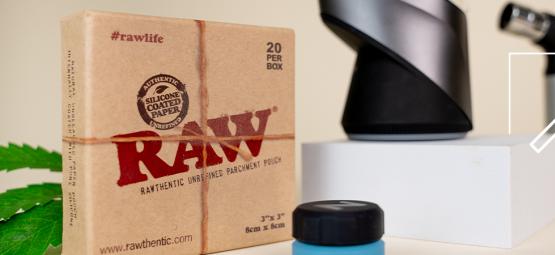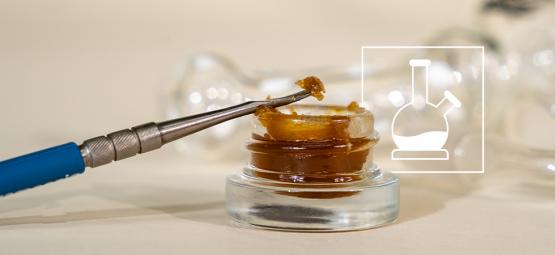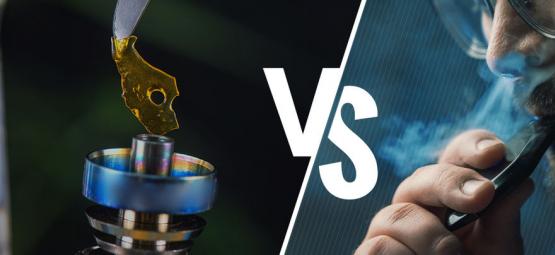The ultimate guide to cannabis concentrates
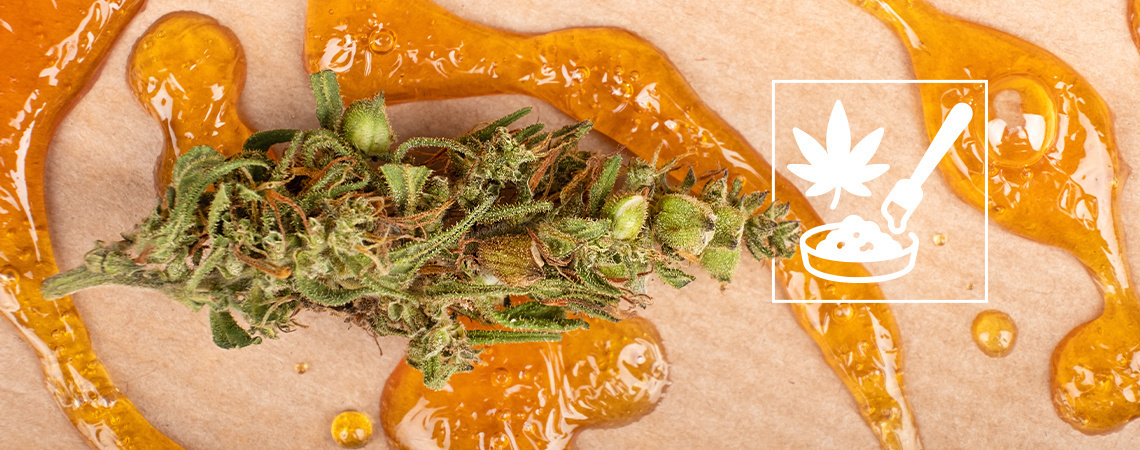
Cannabis concentrates are flavour-packed and seriously potent. They’re not for everyone—but if you're curious about the next level of cannabis, this guide is essential reading.
Cannabis concentrates are among the most powerful and versatile products available to users today. Whether you're looking for a quicker onset of effects, cleaner hits, or simply more efficient consumption, concentrates deliver. But with so many types and methods, it can be hard to know where to begin.
This guide lays out the foundations of cannabis concentrates. From what they are and how they're made, to how to use them, this article covers the essential information in a simple and structured format.
What are cannabis concentrates?
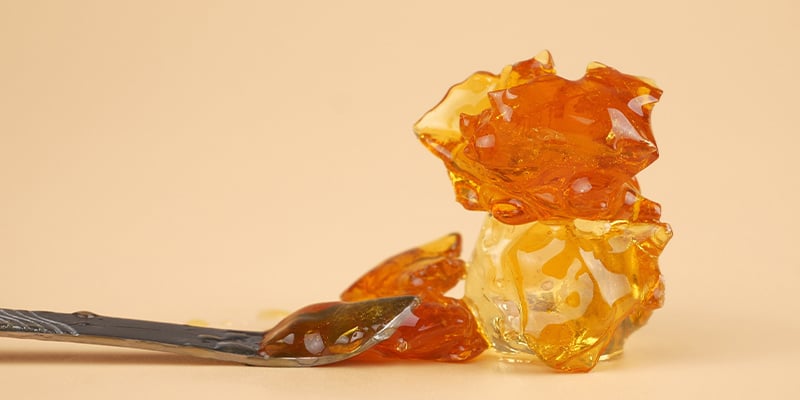
Cannabis concentrates are products made by extracting active constituents from the cannabis plant—mainly cannabinoids and terpenes—and separating them from the rest of the plant material. This extraction process ultimately removes excess plant matter, leaving behind a product that is much stronger than traditional cannabis flower.
Concentrates vary in texture depending on the processing method—ranging from sticky oils to glass-like shards and creamy substances. While they differ in consistency, they all offer high potency and can be consumed through various methods such as dabbing, vaping, or infusing into edibles.
Concentrates are particularly useful for users who need more immediate or pronounced effects, such as those who consider themselves medical users. Recreational users also appreciate the intensity and quick onset of effects, as well as the ability to consume less material for the same or greater impact.
The basic principles of concentrates
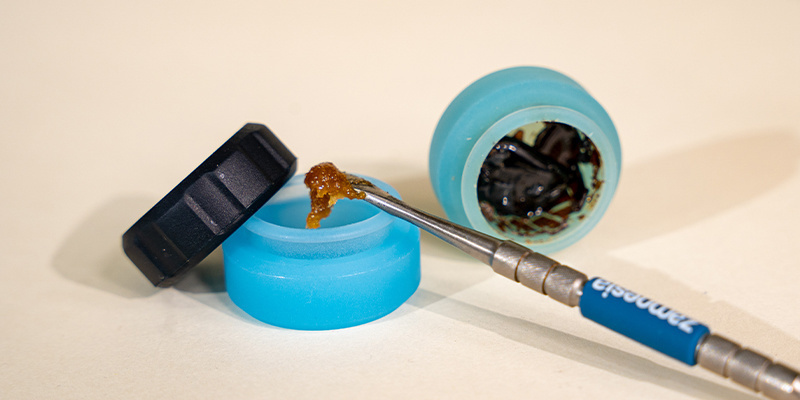
Cannabis concentrates are all about maximising the plant's active compounds while minimising the bulk of the plant itself. To understand how they work, it helps to look at three key elements of the cannabis plant.
Cannabinoids
Cannabinoids are chemical compounds produced by the cannabis plant. The two best-known cannabinoids are THC (tetrahydrocannabinol), which causes the psychoactive effects of cannabis, and CBD (cannabidiol), which is non-intoxicating and linked to various holistic effects. Concentrates aim to isolate and amplify these compounds for more targeted effects.
In addition to THC and CBD, other cannabinoids like CBG, CBN, and THCV may be present in smaller amounts, each offering unique effects. For instance, CBN is often linked to soporific properties, while THCV may help reduce appetite. Concentrates allow for better targeting of these effects through refined cannabinoid ratios.
Terpenes
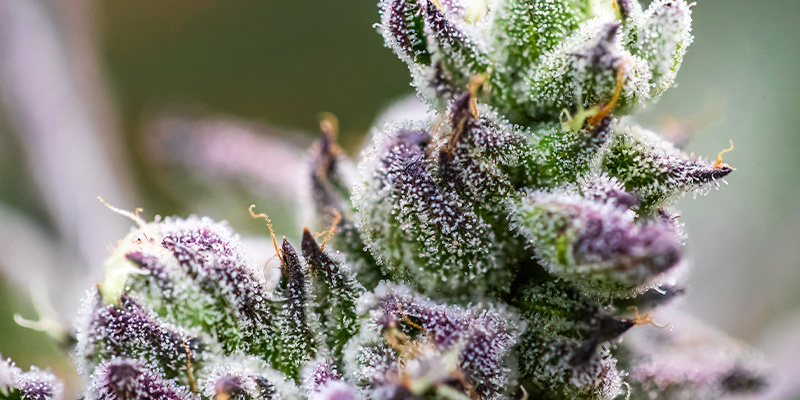
Terpenes are aromatic compounds found in cannabis that give each strain its distinct smell and flavour. They also play a role in the overall effect profile, sometimes enhancing or modifying the impact of cannabinoids. A high-quality concentrate maintains a strong terpene profile, offering better flavour and a more balanced experience.
Common terpenes include myrcene (musky, relaxing), limonene (citrusy, uplifting), and pinene (piney, alertness-enhancing). Preserving these during extraction, especially in live resin and "sauce", ensures not only better taste but potentially a more nuanced psychoactive effect due to the entourage effect.
Trichomes
Trichomes are tiny crystal-like structures that form on the surface of cannabis flowers. This is where most of the plant's cannabinoids and terpenes are stored. Concentrates are essentially a method of collecting and refining trichomes, making them easier to consume in a more potent form.
During harvesting, preserving trichomes is crucial. Techniques like dry sifting, freezing, and low-impact trimming are used to avoid damaging these resin glands. The quality of a concentrate often reflects the care taken at the trichome collection stage.
Types of cannabis concentrates
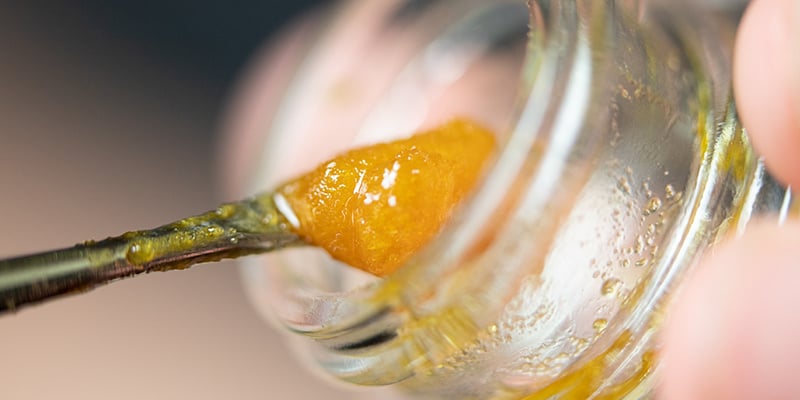
Cannabis concentrates fall into two broad categories based on how they are made: solvent-based and solventless. The main difference lies in whether a chemical solvent is used during extraction. Each type offers different textures, potencies, and flavours.
Solvent-based concentrates
Solvent-based concentrates are created using chemicals like butane, propane, or CO₂ to extract active compounds from cannabis plant material. They often yield potent products available in a variety of textures.
- Shatter: Hard and glass-like with a smooth break. Very high THC content.
- Wax: Soft and opaque with a buttery texture. Easier to handle than shatter.
- Budder: Creamy and whipped. Rich in flavour and easy to dab.
- Crumble: Drier and more brittle than wax. Versatile for various uses.
- Live resin: Made from freshly frozen plants. Strongly retains terpene profiles.
- Sauce: Thick and syrupy. Usually contains both high-terpene extract and THCA crystals.
Each of these has its pros and cons depending on user needs. Shatter tends to be more stable and shelf-stable, whereas live resin prioritises terpene retention and flavour.
Solventless concentrates
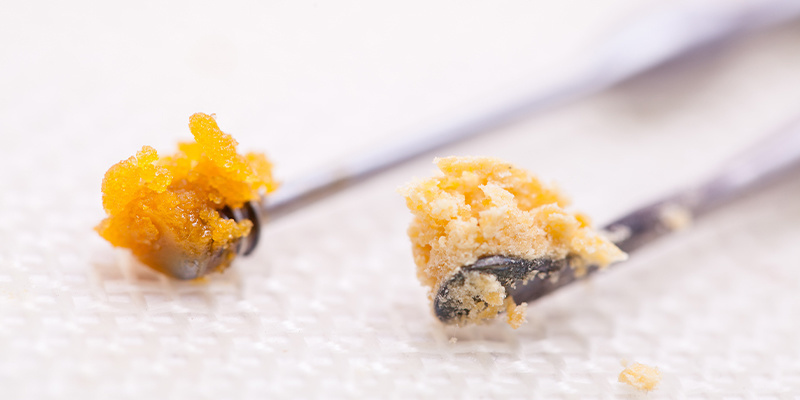
Solventless concentrates avoid the use of chemicals, relying instead on heat, pressure, or water. They are typically favoured by those seeking a cleaner, more natural product:
- Rosin: Extracted using only heat and pressure. Known for its purity.
- Bubble hash: Uses ice water to separate trichomes. Creates a quality hash product.
- Dry sift (kief): A powder made from loose trichomes. Easy to sprinkle on flower or press into hash.
These methods are increasingly popular as consumers seek cleaner, additive-free cannabis options. Rosin, in particular, has become popular among home users thanks to the availability of small-scale rosin presses.
How are cannabis concentrates made?
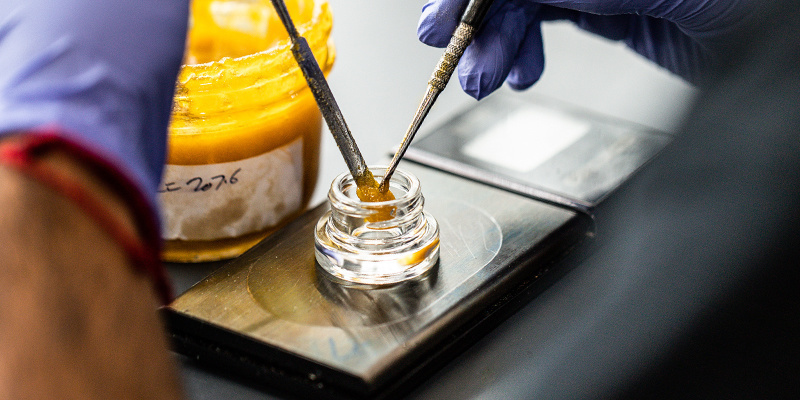
Cannabis concentrates are made through various extraction methods that target cannabinoids and terpenes, separating them from the rest of the plant. Each method affects the final product's purity, potency, and texture.
- Hydrocarbon extraction (BHO): Uses butane or propane to strip cannabinoids and terpenes. Known for producing shatter, wax, and budder.
- CO₂ extraction: Involves supercritical carbon dioxide. Creates cleaner products and is often used in vape cartridges.
- Ethanol extraction: Uses high-proof alcohol. Efficient and scalable, ideal for tinctures and edibles.
- Solventless methods: Include rosin pressing and ice water extraction. These methods avoid chemicals and are valued for producing natural, clean concentrates.
Safe extraction is vital, because poorly made concentrates can contain leftover solvents or contaminants. Always source products from reputable providers who follow safety protocols.
Likewise, proper lab testing is essential. Quality producers will check for residual solvents, mould, pesticides, and verify cannabinoid content. Look for products with Certificates of Analysis (CoAs) to ensure safety.
How to use cannabis concentrates
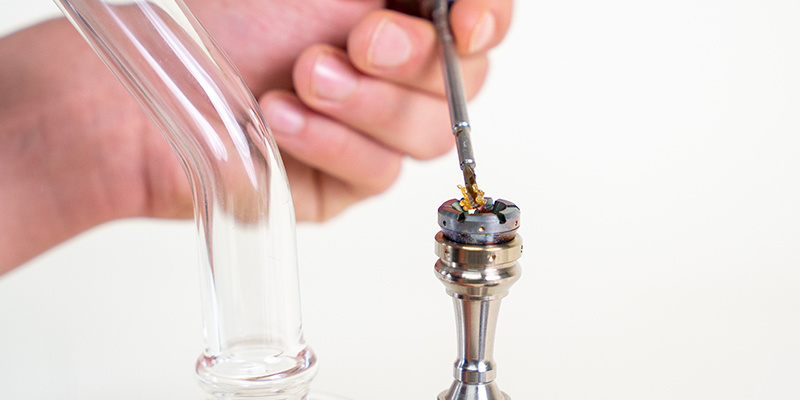
Concentrates can be used in several ways depending on your preferences, experience level, and the type of concentrate. Each method offers a different balance of flavour, onset time, and intensity.
Dabbing
Dabbing involves heating a small amount of concentrate on a hot surface (called a "nail" or “banger” depending on the configuration) and inhaling the vapor through a dab rig. This method is fast-acting and very potent, making it popular among experienced users. Use caution when starting out, as the effects can be intense.
Using a carb cap helps control airflow and temperature, leading to better flavour and vapor production. Digital e-nails offer consistent temperature control and reduce the risk of overheating your product.
Vaping
Vaping heats concentrates to a lower temperature than dabbing, preserving terpenes and offering a smoother experience. Vape pens are convenient and portable—ideal for those who want quick effects without smoke or strong odours.
Some vaporizers are designed specifically for concentrates and offer temperature controls, while others are multi-purpose. Disposable cartridges pre-filled with distillate are common but may contain cutting agents, so check ingredients before use.
Vaporshop
Dry herb vaporizers for every style. Choose from portable and desktop models by Storz & Bickel, Dynavap, and others.
Edibles
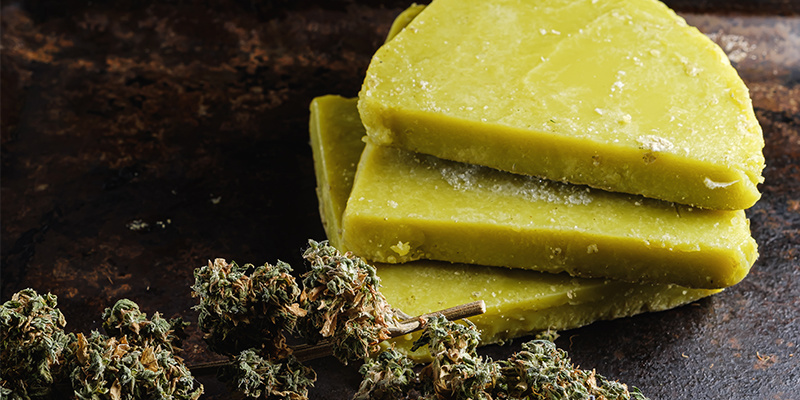
Concentrates can be infused into butter or oil to make homemade edibles. Effects take longer to kick in—usually 30 to 90 minutes—but tend to last much longer than with inhaled methods. Start with small doses and wait before taking more.
Make sure the concentrate is decarboxylated before infusion—this means heating it to activate the THC. Neglecting this step can result in weak or ineffective edibles. Once infused, store properly to maintain potency.
Tinctures
Tinctures are liquid extracts taken under the tongue for quick absorption or added to drinks and food. They offer precise dosing and are easy to use, making them suitable for beginners and medical users alike.
Use a dropper to control your dose. Effects generally begin within 15–45 minutes when taken sublingually, but can take longer if swallowed. Tinctures often use alcohol or MCT oil as a base.
Topicals
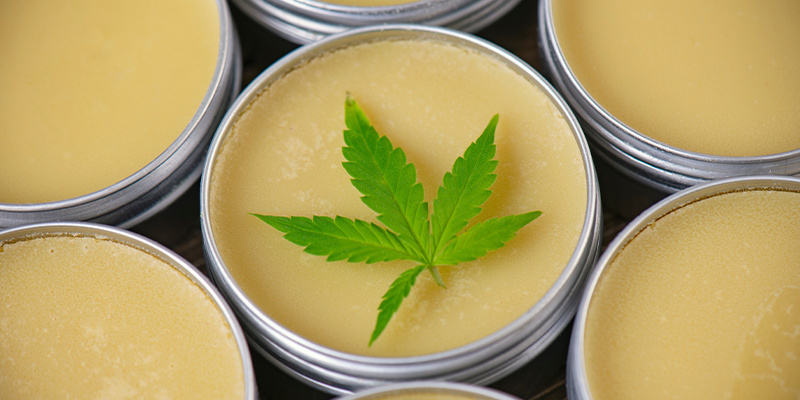
Topicals include creams and balms infused with concentrates. Users apply these topicals to the skin for localised relief, without psychoactive effects.
Topicals may include ingredients like menthol or camphor for added cooling effects. They are often chosen for issues like arthritis, muscle aches, or skin irritation.
Dosage tips
Because concentrates are much stronger than bud, it's important to start small. Begin with a tiny amount (around the size of a grain of rice) and wait to gauge the effects before using more. Pay attention to THC and CBD percentages on the label and use a consistent measuring method.
If you’re new to using cannabis concentrates, aim for products with lower THC levels and/or a balanced THC:CBD ratio. Recording your doses in a journal, and how each makes you feel, can help you find your ideal range more quickly and safely.
Benefits of cannabis concentrates
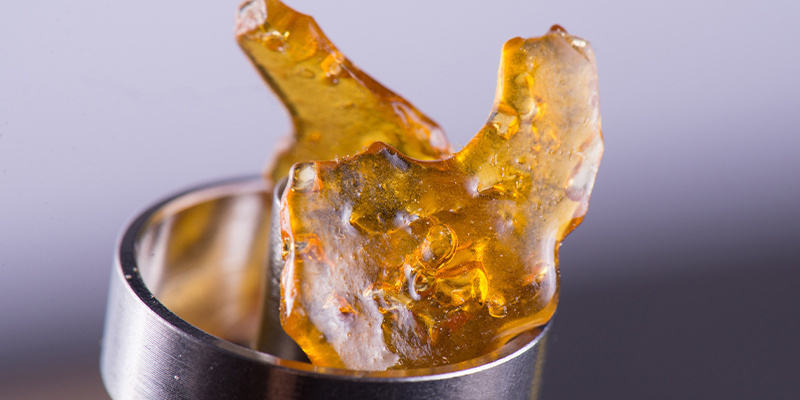
Cannabis concentrates provide several key advantages over traditional flower, making them a popular choice for both medical and recreational users:
- Potency: Concentrates contain much higher levels of THC or CBD, allowing users to feel stronger effects with less product. This is especially useful for those needing fast relief or higher doses.
- Purity: With less plant material, concentrates offer a smoother, cleaner inhale. This reduces throat irritation and may be better for users with sensitivities.
- Efficiency: Because of their strength, only a small amount is needed to achieve the desired effect. This makes concentrates more economical in the long term.
- Versatility: Concentrates can be used in various ways—dabbing, vaping, edibles, tinctures, and more—making them suitable for different lifestyles and needs.
Risks and considerations
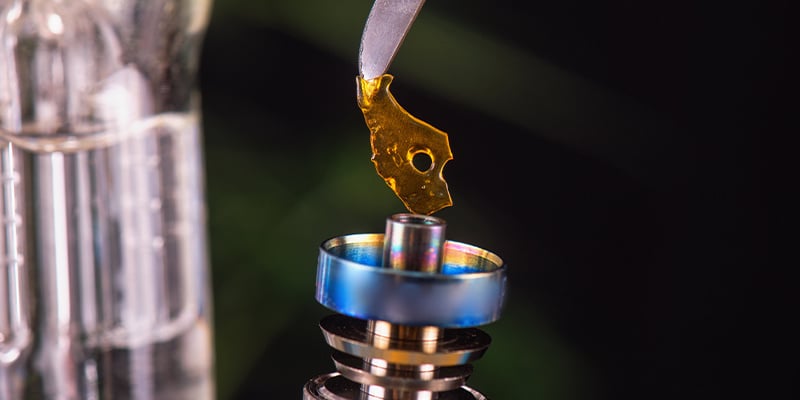
While concentrates have benefits, they must be used responsibly in order to prevent adverse outcomes. Consider the following:
- Overconsumption: Due to high potency, it’s easy to use too much. New users should start low and go slow to avoid uncomfortable effects.
- Legal status: Laws on concentrates vary. Some regions allow flower but restrict extracts. Always check your local regulations before purchasing or using cannabis concentrates.
- Product quality: Not all concentrates are made to the same standards. Poor-quality products often carry residual solvents or contaminants. Stick to lab-tested options from trusted suppliers.
When used with care and attention, concentrates can be a safe, enjoyable part of a cannabis routine.
Cannabis concentrates vs flower
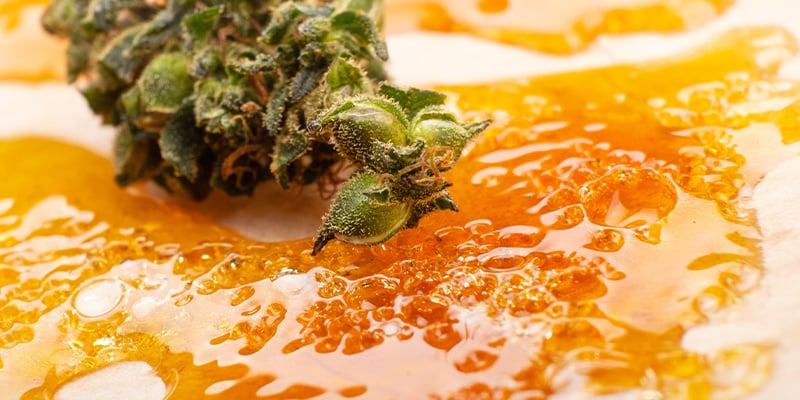
Many users compare concentrates to flower to decide which suits them best. Here's how they stack up:
- Potency: Concentrates typically contain 50–80% THC, while flower ranges from 10–25%. This makes concentrates more suitable for experienced users or those needing strong effects.
- Consumption methods: Flower is usually smoked or vaped, while concentrates can be dabbed, vaped, eaten, or applied topically.
- User experience: Concentrates deliver effects quickly and intensely. Flower may offer a more gradual onset and is often easier to control for new users.
Both forms have their place. Concentrates offer efficiency and strength, while flower delivers a traditional, full-spectrum experience.
Final thoughts on cannabis concentrates
Cannabis concentrates give users a potent, flexible, and efficient way to enjoy cannabis. Whether you're looking for stronger effects, cleaner consumption, or a specific method like dabbing or tinctures, concentrates offer a reliable solution.
As always, the key is quality and moderation. Start with small doses, choose trusted products, and pick the method that fits your needs. Ready to explore? Visit the Zamnesia Headshop to discover a wide range of dabbing accessories and tools.
You might also like





 United States
United States

